Dragon fruit—also known as pitaya—is a striking, tropical cactus that produces vibrant pink or yellow fruits with a sweet, juicy interior. Most people associate dragon fruit with tropical outdoor gardens, but here’s the exciting truth: you can absolutely grow dragon fruit indoors! Whether you live in an apartment or a cold climate, this exotic fruit can thrive right inside your home—if you follow the right steps.
This comprehensive indoor growing guide reveals everything you need to know to cultivate a healthy, fruit-producing dragon fruit plant indoors. From lighting and containers to watering and pollination, here’s how to turn your indoor space into a tropical fruit oasis.
Why Grow Dragon Fruit Indoors?
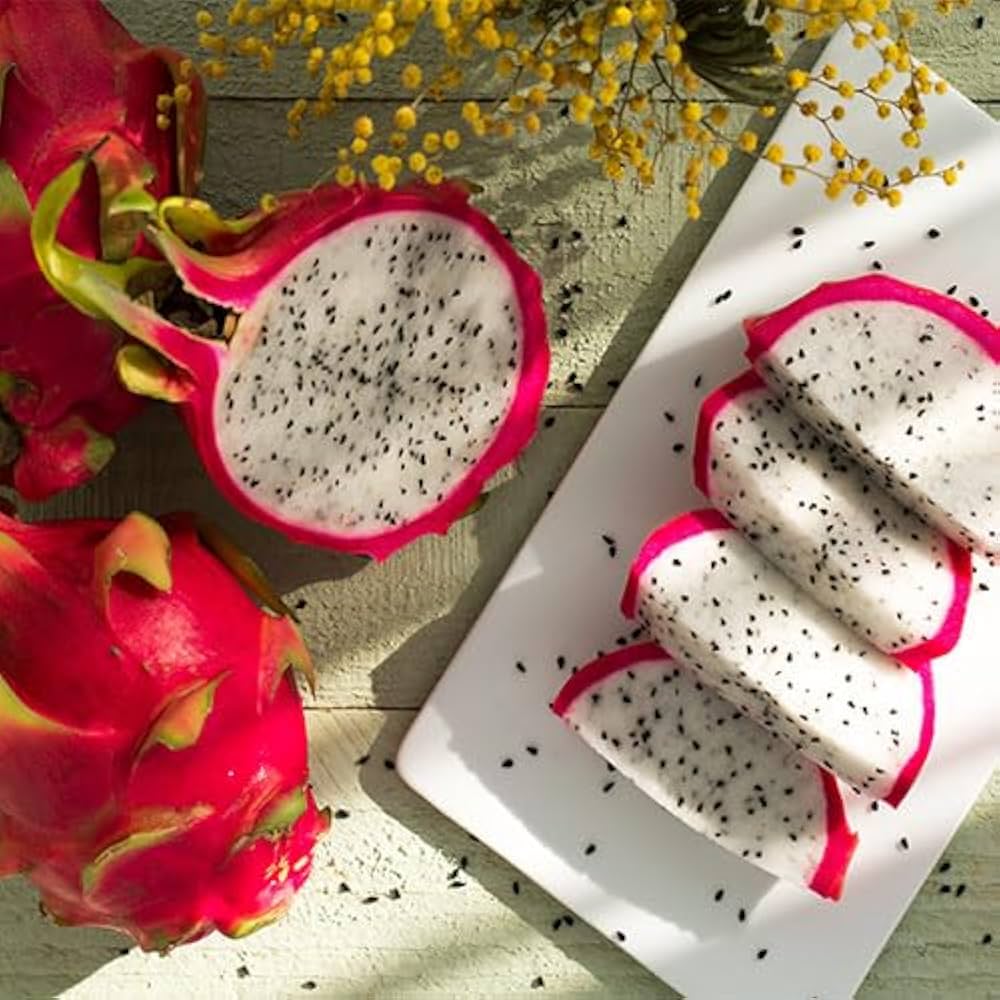
Before diving into the “how,” let’s explore the “why.”
- Year-Round Growing: Indoors, your plant isn’t affected by frost or seasonal changes.
- Space-Friendly: Perfect for small homes, apartments, or balconies.
- Pest Control: Fewer pest problems than outdoor gardening.
- Decor + Edible: A beautiful houseplant that also produces fruit.
So yes, not only is it possible, but indoor dragon fruit growing is rewarding and surprisingly simple with the right approach.
Step-by-Step Guide to Growing Dragon Fruit Indoors
1. Choose the Right Variety
There are several types of dragon fruit, and while most can be grown indoors, self-pollinating varieties are ideal for indoor spaces because they don’t require hand-pollination or cross-pollination from another plant.
Best Indoor Varieties:
- Hylocereus undatus (White flesh, pink skin)
- Hylocereus costaricensis (Red flesh, pink skin)
- Hylocereus megalanthus (White flesh, yellow skin)
Tip: Choose a dwarf or compact variety if space is limited.
2. Select the Perfect Container
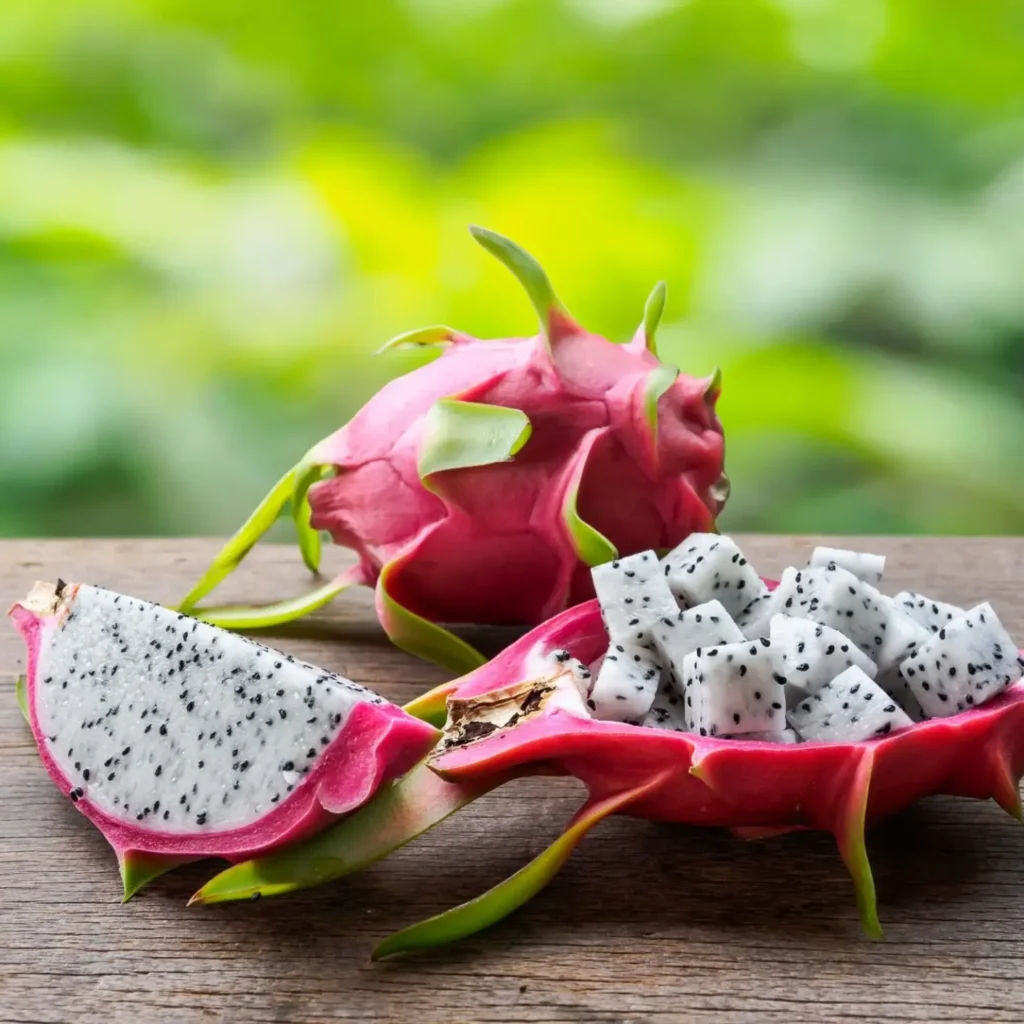
Dragon fruit is a climbing cactus with shallow roots, but it grows tall and heavy. Choosing the right pot ensures stability and root health.
Container Requirements:
- Size: At least 15–20 gallons for mature plants.
- Material: Terracotta, plastic, or ceramic with drainage holes.
- Depth: Around 12–18 inches deep is ideal.
Drainage is crucial. Always use pots with holes to avoid root rot.
3. Use the Right Soil Mix
Dragon fruit thrives in well-draining, slightly acidic soil.
Ideal Soil Mix:
- 1 part cactus potting mix or sandy soil
- 1 part perlite or coarse sand (for drainage)
- 1 part compost (for nutrients)
Mix thoroughly before planting to ensure even water flow and air circulation.
4. Provide Strong Support for Climbing
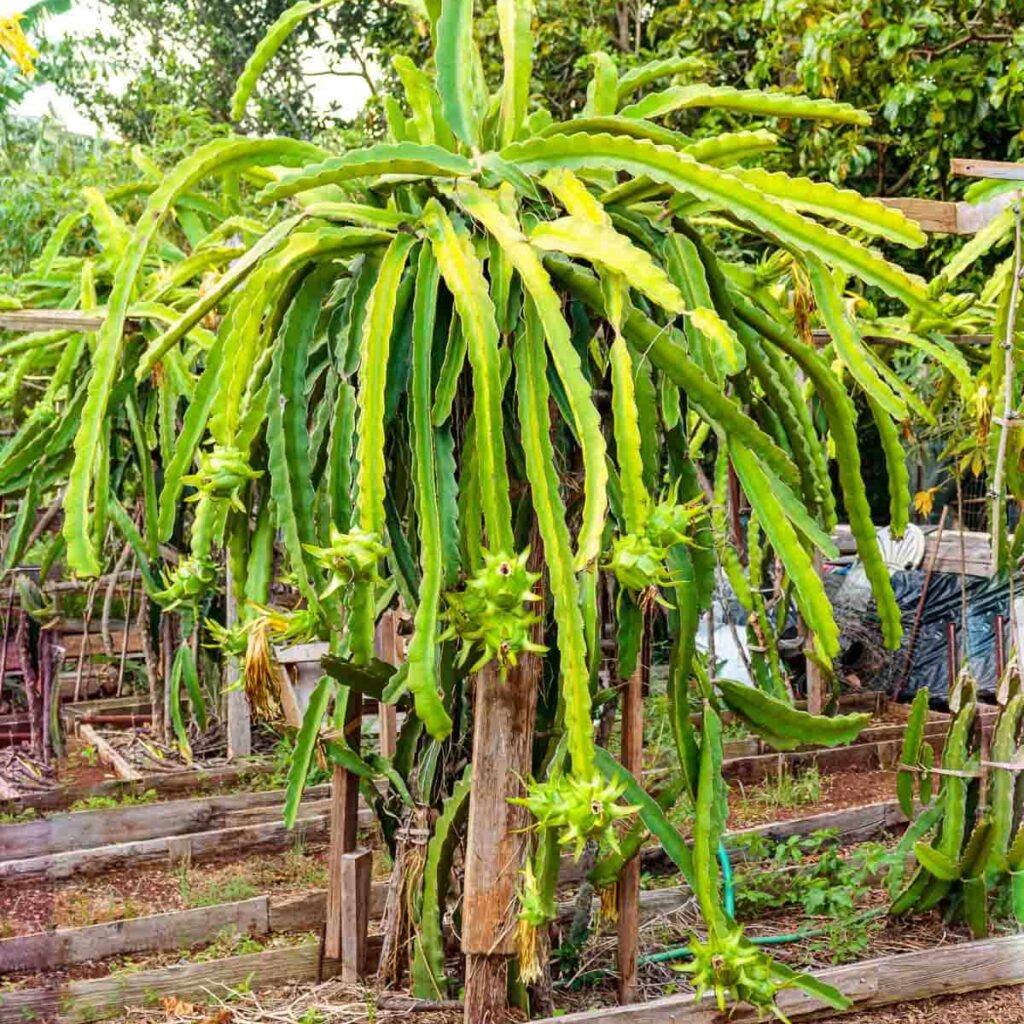
Dragon fruit needs vertical support as it grows. Indoors, this is even more important due to limited space.
Indoor Support Ideas:
- Tall bamboo stakes
- Trellis inside the pot
- Wooden or PVC post with crossbars
Train the plant using soft plant ties or garden Velcro, adjusting as it grows.
5. Ensure Adequate Light
This is the most critical aspect of growing dragon fruit indoors.
Light Needs:
- 6–8 hours of bright light daily
- South or west-facing window is best
- Supplement with grow lights if natural light is insufficient
Use LED full-spectrum grow lights placed 6–12 inches above the plant, on for 12–14 hours per day in low-light seasons or rooms.
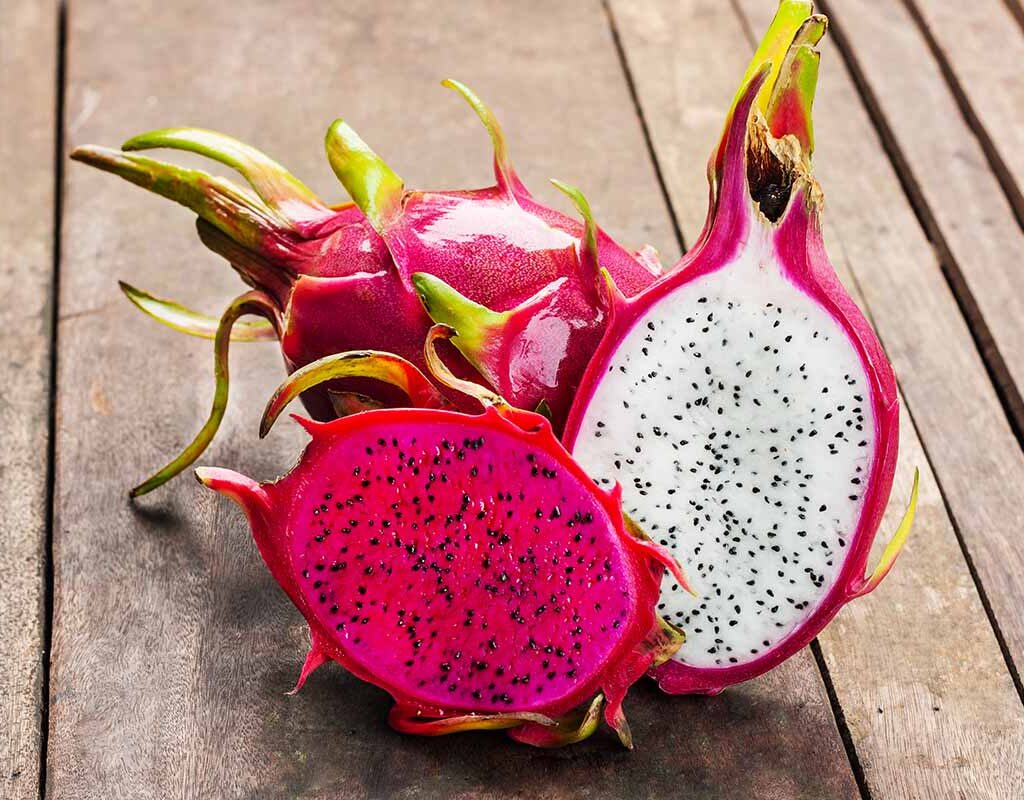
6. Water Properly and Avoid Overwatering
Though it’s a cactus, dragon fruit isn’t drought-tolerant like desert cacti. It needs consistent moisture—but not sogginess.
Watering Guidelines:
- Water when the top 2 inches of soil are dry
- Avoid waterlogging; empty the drainage tray regularly
- Reduce watering during the winter months when growth slows
Mist the plant occasionally to maintain moderate humidity indoors.
7. Fertilize Smartly
Indoor plants have limited access to nutrients, so fertilizing is essential.
Fertilizer Schedule:
- Use a balanced 10-10-10 or 8-4-12 fertilizer every 4–6 weeks
- During the flowering/fruiting phase, switch to a high-phosphorus fertilizer
- Use organic options like compost tea, worm castings, or seaweed extract for safer, indoor-friendly feeding
Don’t overfertilize—this can burn the roots or cause excessive foliage growth without fruit.
8. Manage Indoor Temperature and Humidity
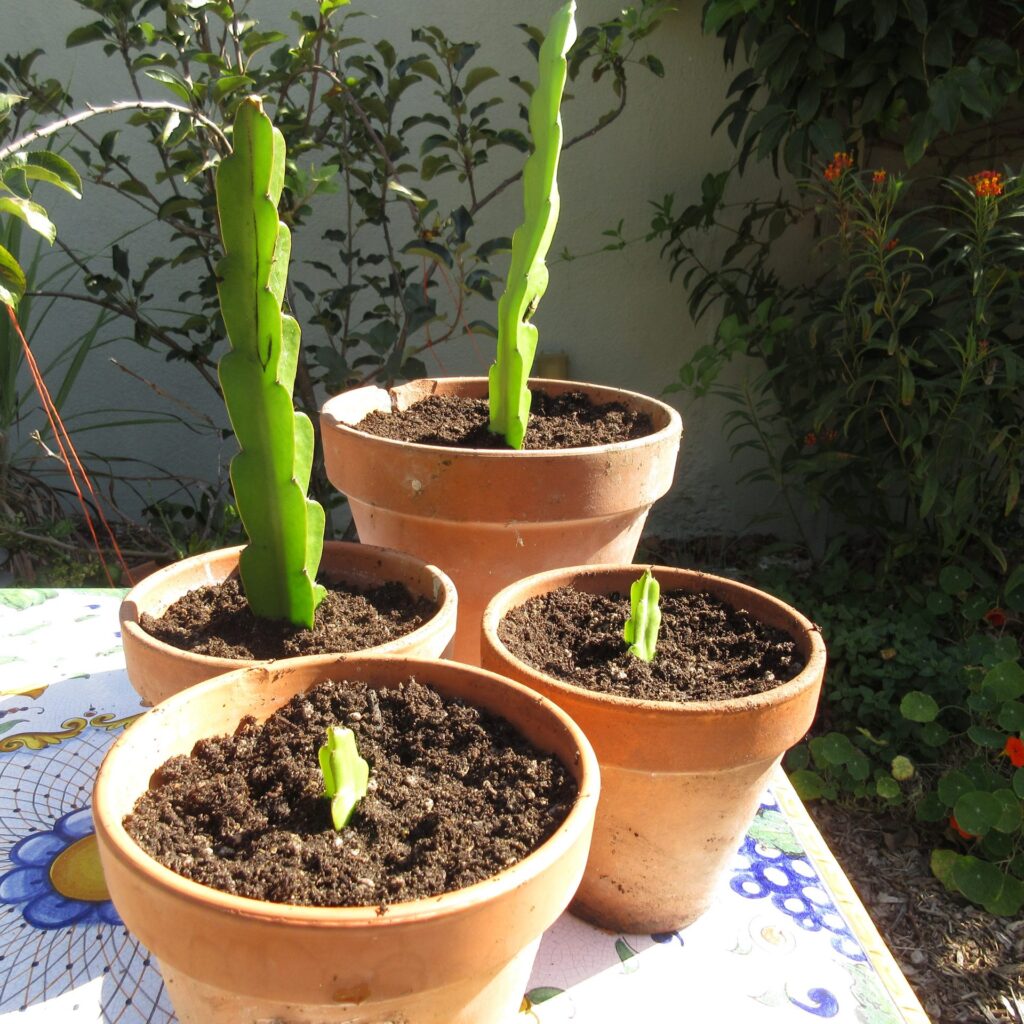
Dragon fruit plants love warmth and dislike cold.
Ideal Indoor Conditions:
- Temperature: 65–85°F (18–29°C)
- Humidity: 30–50% (normal home humidity is usually fine)
- Keep away from cold drafts, heaters, or air conditioners
Use a humidity tray or humidifier if your home is especially dry in winter.
9. Prune for Health and Size Control
Pruning is essential to manage indoor size, airflow, and shape.
Pruning Tips:
- Remove dead, weak, or crowded stems
- Limit to 3–5 main branches for a compact, productive plant
- Prune after flowering or when space becomes tight
Use sterile scissors to prevent disease spread.
10. Pollinate Flowers (If Needed)
Even self-pollinating varieties may benefit from hand-pollination indoors, especially since natural pollinators like moths and bats won’t visit your living room.
How to Hand-Pollinate:
- Wait for the flower to bloom (usually at night)
- Use a soft brush or cotton swab to collect pollen from the stamens
- Gently apply it to the stigma (center part of the flower)
Flowers bloom briefly (1 night), so check plants daily during the budding stage.
11. Patience: Fruiting Takes Time
Dragon fruit takes time to fruit—usually 1 to 2 years after planting from cuttings (longer from seed). Don’t rush the process.
Signs of Readiness:
- Plant reaches maturity with several thick, long stems
- Flowers begin to appear (often in late spring or summer)
- Fruits mature within 30–50 days after pollination
Pick the fruit when it’s fully colored and slightly soft to the touch.
Common Indoor Growing Problems and Solutions
| Problem | Cause | Solution |
|---|---|---|
| Yellowing stems | Overwatering or poor light | Reduce watering, move to brighter spot |
| No flowers or fruit | Low light or nutrient deficiency | Increase light exposure and use balanced fertilizer |
| Moldy soil or pests | Overwatering, poor airflow | Improve drainage, increase air circulation |
| Leggy or floppy growth | Insufficient light or no support | Use grow lights and vertical support |
Final Thoughts
Growing dragon fruit indoors might sound like a challenge, but with the right tools and attention, it’s both doable and deeply rewarding. You can enjoy watching this architectural cactus flourish under your care—and eventually harvest exotic fruit grown in your very own home.
By choosing the right variety, providing ample light, supporting vertical growth, and being consistent with care, you’ll transform any indoor corner into a productive tropical garden. Plus, it’s a stunning conversation starter!

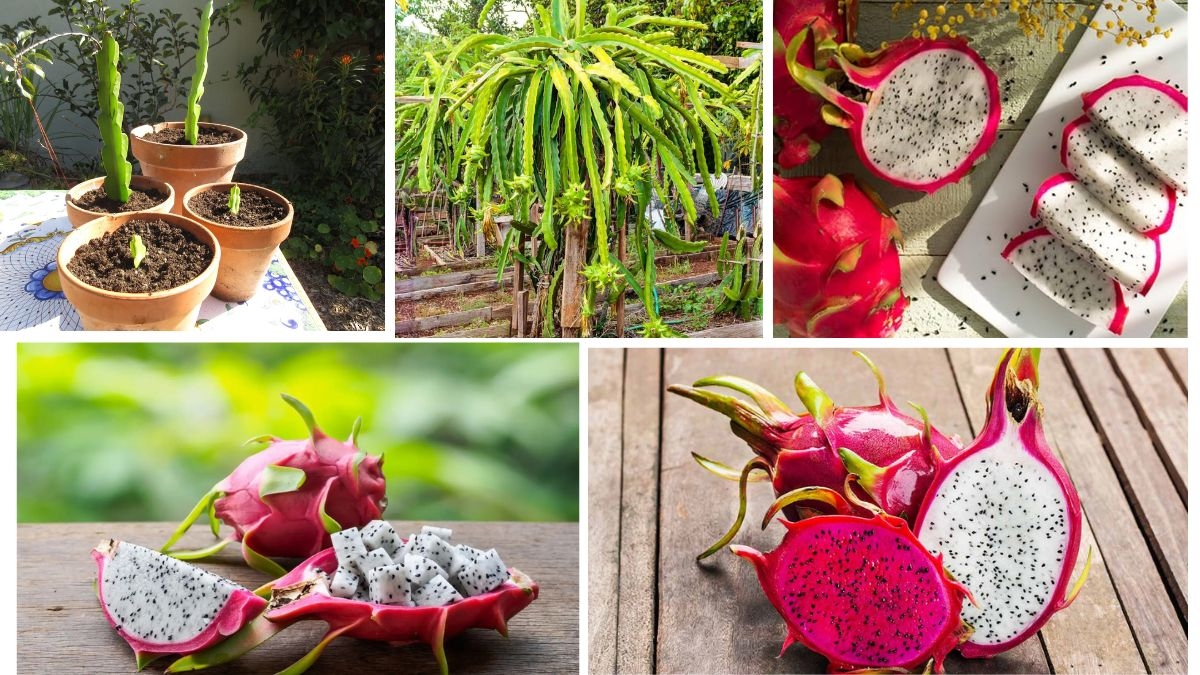





Leave A Comment